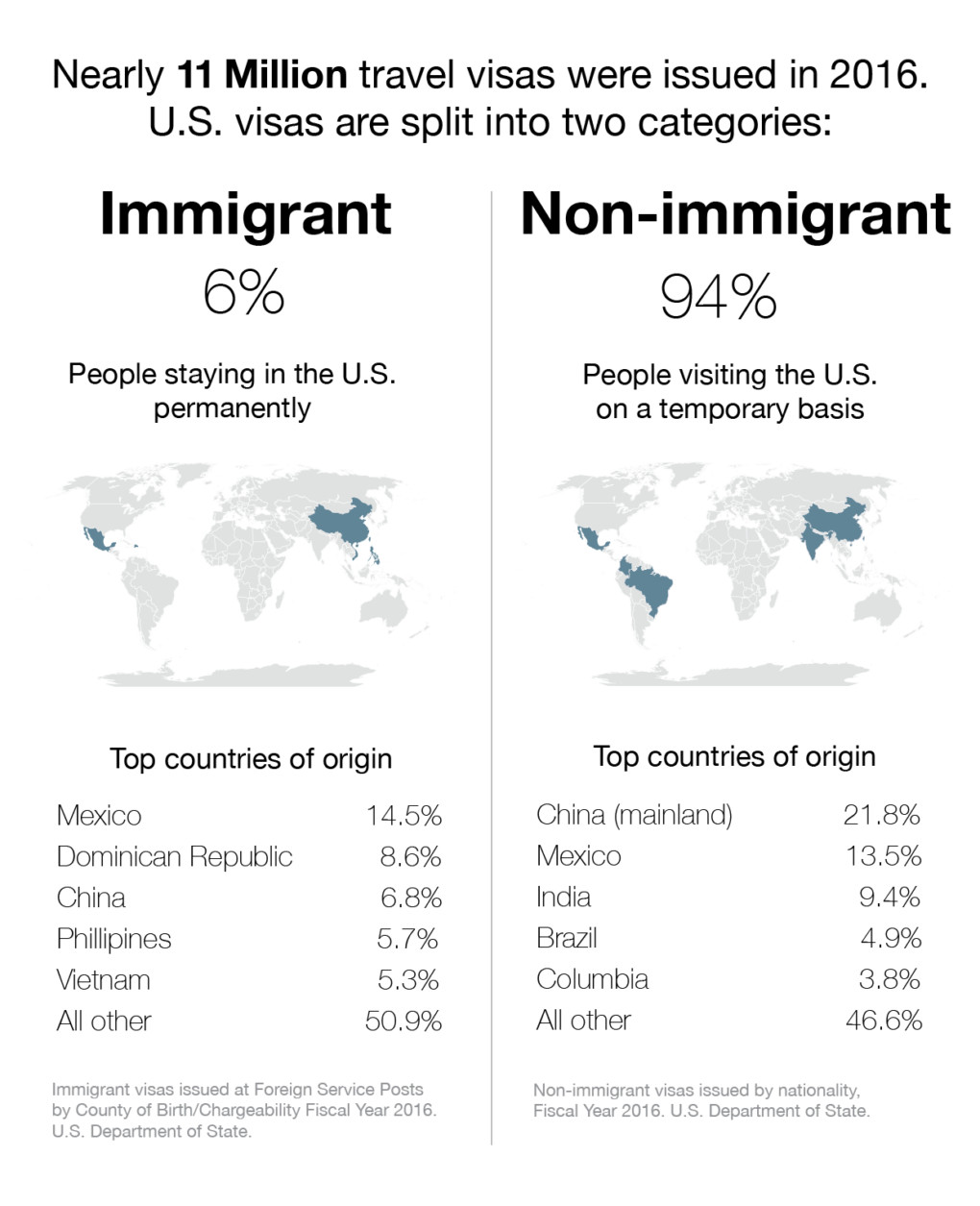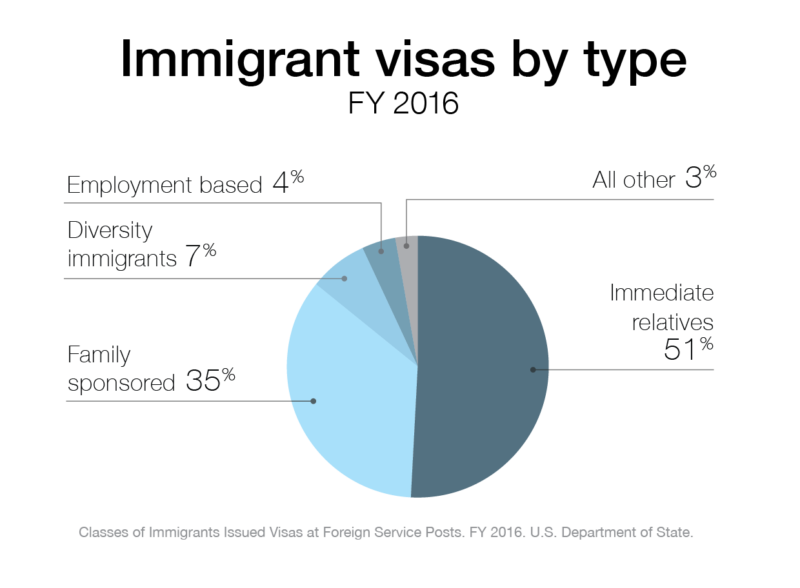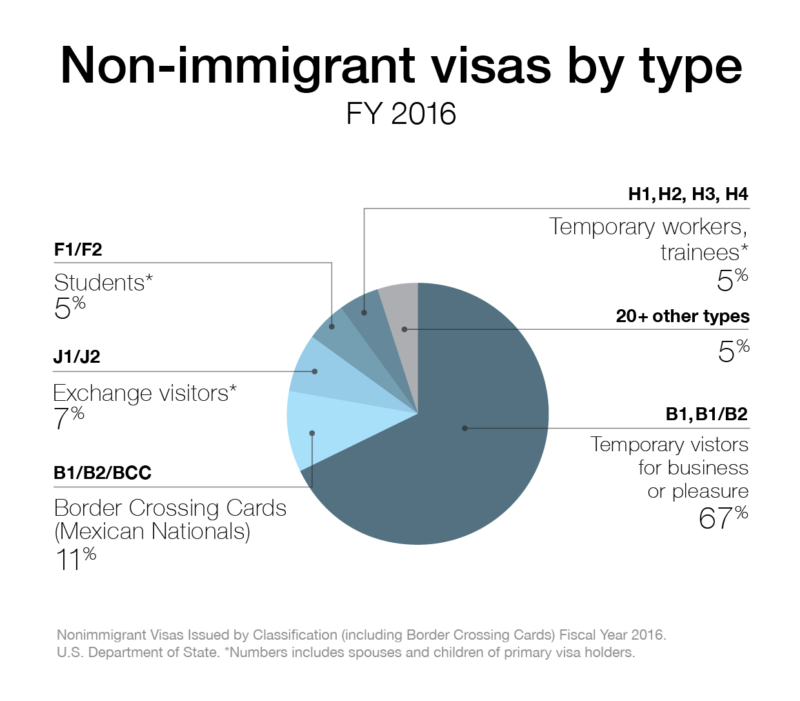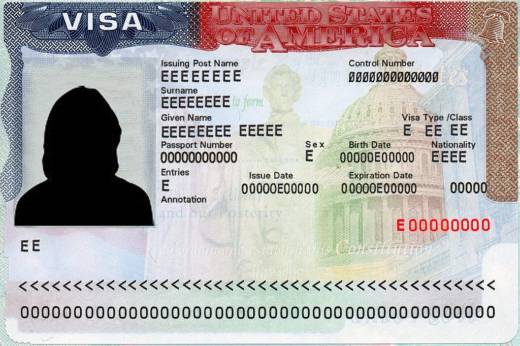Of the nearly 11 million visas the U.S. issued in fiscal year 2016, just 6 percent were immigrant visas, mostly green cards granted to people seeking to live here permanently. The remaining 94 percent were non-immigrant visas issued for temporary stays, according to the State Department. That includes visas for everything from tourism and business travel (except for citizens of the 38 mostly European nations in the visa-waiver program for short visits) to all foreign workers and students seeking to stay here for longer than 90 days.

As most U.S. visa holders can attest, applying for one is no easy feat. The process can be a notoriously long and complicated affair involving fees, volumes of documentation and multiple security screenings. It's particularly arduous for foreigners applying for permanent residency, but those merely seeking temporary, non-immigrant visas, it's not exactly a walk in the park either.
And if the Trump administration gets its way, that process stands to become all the more difficult and restrictive.
Central to the "America First” protectionist platform that catapulted President Trump into the White House is a dramatic tightening of entry into the country. In addition to his promise to crack down on illegal immigration, Trump also pledged to set historically low caps on legal immigration, part of a purported effort to increase security and increase American jobs by reducing the number of foreign workers.
One of Trump's first major moves in office was an executive action temporarily banning travel from six predominantly Muslim countries, a measure that was held up for months in federal courts and recently received partial clearance from the U.S. Supreme Court, which will further review it this fall. His administration has sought enhanced security screenings before issuing any type of visa, even those for tourism and business travel, an example of the "extreme vetting" he promised during the campaign.
So far, though, most of Trump’s hard-line immigration actions have been largely symbolic, with lots of tough talk but not much in terms of significant policy changes.
Immigrant visas (permanent residents)
The total number of immigrant visas issued each year steadily rose to over 600,000 during President Barack Obama’s second term.
The vast majority of immigrant visas are allocated to family members of U.S. citizens. Immediate relatives, such as spouses and children under 21, are given preference. The government also issues a small number of immigrant visas based on employment, as well as through a “diversity” program, allocated to people from countries with historically low immigration rates. Immigrant visa holders must then pay a fee to receive a green card, which acts as proof of lawful permanent residency. Green card holders can apply for citizenship after living in the U.S. for five years, or after three if married to a citizen.

These numbers do not include refugees and asylum-seekers, 110,000 of whom were admitted to the U.S. in 2016. President Trump has proposed increased screening for this group -- the current cap for the 2017 fiscal year is set at 50,000.
Non-immigrant visas (temporary visitors)
There are more than 20 different categories of non-immigrant visas, ranging widely from tourist visas to highly specialized visas for foreigners with "extraordinary abilities." Below are descriptions of the most commonly issued non-immigrant visas, and how access to them could change under the Trump administration.

B visas: Temporary visitors for business or pleasure
B visas account for the vast majority of all U.S. visas issued. B1/B2 visas are given to people visiting the U.S. for business or pleasure, up to six months at a time. Under special agreements, residents of 38 countries -- including South Korea, Australia, Chile and most of western Europe -- do not need to apply for these to enter the U.S. for short-term visits.
Border crossing cards, a special type of B visa, are issued to Mexican citizens allowing limited entry to the U.S. of up to 75 miles from the southern border.
Potential changes under Trump
Outside of Trump’s proposed six-nation travel ban , there are no immediate policy proposals impacting the B visa category. However, the administration recently rolled out a new questionnaire for all visa applicants, tightening an already strict application process. Under the new rules, consular officials can request 15 years' worth of biographical information, including the last five years of social media handles.
H visas: Temporary workers; trainees
The majority of H visas are classified as H-1B -- allowing people with advanced degrees to live and work in the U.S. for up to six years. Many companies sponsor workers on H-1B visas to fill specialized roles, including computer programmers and doctors.
The government currently uses a lottery system to award 65,000 H-1B visas per year to private industries, 20,000 to graduate student workers and an unrestricted number to students and trainees that meet certain criteria (over 180,000 total H-1B visas were awarded in 2016). Although the government doesn't release official numbers, an estimated 600,000 to 900,000 workers are currently in the U.S. on H-1B visas.
H2 visas are another major subcategory, allocated for seasonal agricultural workers (H-2A) and non-agricultural workers (H-2B), including many seasonal employees who work at Trump's Mar-a-Lago estate in Florida.
Potential changes under Trump
The “Buy American, Hire American” executive order, signed by Trump in April contains a provision to reform the H-1B visa program. The Trump administration wants to reform the current lottery system with a “merit-based” one, to ensure jobs are awarded to the most skilled and highest-paid workers, and to restrict the number of visas awarded each year.
The current H-1B program has plenty of critics on both sides of the aisle -- companies have been accused of improperly using the program to train foreign workers in the U.S. and then send them back to their home countries to work for lower rates. The overall effect, critics say, is lower wages, and fewer training and jobs opportunities for U.S. citizens in these industries.
Curiously, the Trump administration has not proposed any reforms targeting the H2 worker programs for seasonal low-wage workers. One possible reason? Trump family businesses, including his Mar-a-Lago estate in Florida, have received over 1,000 H-2B (non-agricultural) visas for seasonal employees since 2000, according to a CNN review.
J and F visas
J1 visas are issued to high school or college students participating
in work-study exchange programs. Employers of J-visa holders include leisure and entertainment companies, universities and colleges, and the U.S. government. F1 visas are issued to college students studying in the U.S. Employment is restricted to on-campus positions such as teaching assistants, researchers or student workers.
Potential changes under Trump



